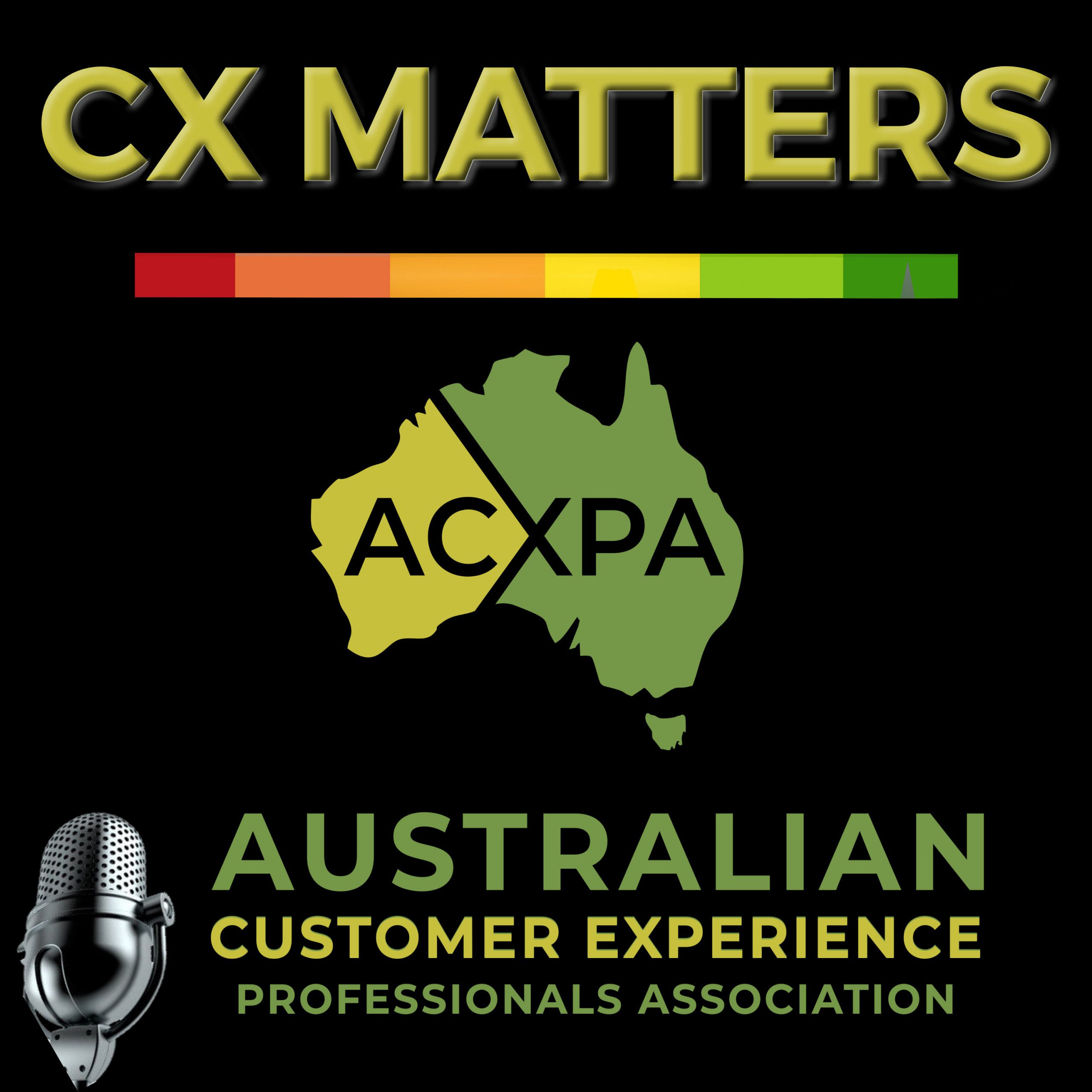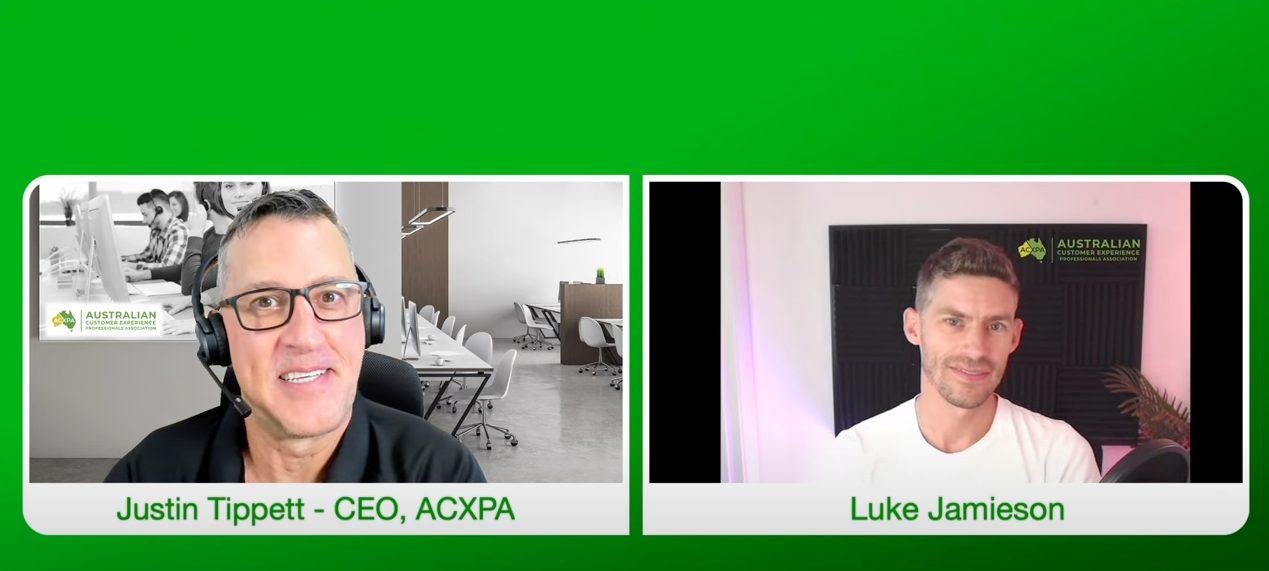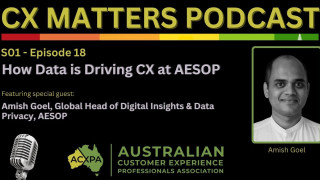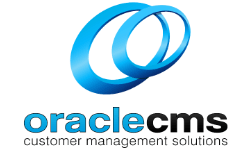Implementing Gamification into a contact centre
In this episode of the CX Matters Podcast, host Justin Tippett interviews Gamification expert Luke Jamieson who reveals some great insights and tips if you are considering implementing Gamification into your contact centre.
Listen now to the Podcast
Just click play below to listen right here in your browser. If you’d rather listen on your favourite podcasting platform, you’ll find the links at the bottom of the page.

May 10, 2023 · Season 1 · Episode 12
Implementing gamification into a contact centre
14 Min, 26 Sec · By ACXPA
In this episode of the CX Matters Podcast, host Justin Tippett interviews Gamification expert Luke Jamieson who reveals some great insights and tips if you are considering implementing Gamification into your contact centre. In this Episode: - Benefits of Gamification in a contact centre - Why it's not a fix-all for employee engagement - Tips on how to make sure your gamification is a success - How much does gamification cost? - How does it align with Reward & Recognition programs? - How long does it take to implement a gamification program? If you're considering implementing gamification into your contact centre, or have a program already and need some tips on how to make sure its a success this is one episode you don't want to miss!
Watch the CX Matters Podcast live recording

Welcome everyone to another episode of the CX Matters Podcast. My name is Justin Tippett, CEO of ACXPA, and in this episode, I am joined again by our gamification and employee engagement expert, Luke Jamieson. Welcome, Luke.
G’day Justin and g’day everyone. Thanks for listening. Awesome to have you on again.
Now, in this particular episode, we’ve done a number on gamification, but in this particular one, we’re going to focus on really giving people some tips for implementing gamification into a contact centre specifically because it’s obviously a tool that’s used by a lot of contact centres, and if they’re not, they’re probably considering it. So, I thought, you know what, let’s help ease in the pain a little bit for them and give them some tips from someone who’s been there, done that several times, both as a user but also someone who’s actually worked for some gamification software companies as well. So, I think you’ve got a really good lens on both sides of it.
So, Luke, I’m going to throw it over to you for some tips for people.
Yeah, sure, thanks. I think from let’s just talk just quickly about the benefits and just reward mark, which is why someone would want to implement gamification. You know, there’s this idea of increased sustainable Employee Engagement, sustainable employee performance, business performance, engagement with support systems, lower employee attrition, greater sense of acceptance and inclusion. All of these things create a self-driven workforce and helps create a, you know, if you’ve got an R&R program, it helps that become more evenly distributed. So, some great benefits, but I think often gamification might be seen as the panacea, the silver bullet to try and solve employee engagement or lower attrition, and people dive in really quickly.
So, like tips or approaching that first and foremost, is understanding why you want to implement gamification. So really understand the key drivers. If it’s purely just around business performance, think bigger. You know, think about how this impacts the employee. If you just turn around and put points or badges or leaderboards on an existing KPI or even a KPI that maybe isn’t all that meaningful, like how you just show up to work, it might be seen as pretty condescending. So, you need to really think about what’s the impact that you want those gamification elements applied to, like why are you doing it?
Understanding your workforce, I think, is also really important. So, understanding the landscape that you have, and we talked a little bit about this, about what is gamification. Really understanding who your workforce is, is going to help you understand the best ways to implement that. I’ll also say, think about your users and what they’re motivated by. Just throwing more extrinsic motivational things to them, so it’s tangible items like money, vouchers, all those sort of things, that doesn’t motivate everybody. And if you need to really think about what are some of the intrinsic ways you can also motivate someone through gamification.
Really say the time up front to get really good design. Gamification is very much about behavioral psychology, and I would recommend if you have the opportunity to get a behavioral psychologist to help you in that journey, there’s plenty out there that really specialize in this space. Do it. It makes a big difference. Just throwing and I talk about points, badges, leaderboards a lot only because they’re the ones that everyone kind of thinks of. There’s so many more mechanics around gamification that are much more advanced.
The last tip I would say is also think about change like what the change is happening.
Luke: People are motivated by two things and what they want to be and what they don’t want to be so need to think about think about that when you’re designing it. And lastly, I would just say that change in itself requires uh is not easy. It requires motivation and ability. So if you’re going to try and motivate people with gamification, make sure you equally pair that with the ability so with learning Etc. Maybe if you can combine those two in the one great if not just make sure that there’s an equal portion. You can’t just have constant motivation all the time expecting that to be sustainable if someone’s not growing learning progressing and achieving.
Interviewer: Some great tips, Luke. I want to ask a couple of other questions I guess that might be on the tips of our listeners’ tongue so to speak. One is budget. Now you’ve obviously worked for some vendors that supply, so I’m not asking to put you on the spot in terms of pricing, so don’t worry. But in terms of a range, most of the models as I’ve understand are sort of per head sort of models. And it might be wrong, but typically there’s an implementation sort of setup cost and then maybe a per head per month kind of model. What is a typical range from bottom end, no bells and whistles, to this is the best to breed? Is it a big gap and what’s rough numbers?
Luke: It is a big gap, and I think it also comes down to functionality. Real bottom end of uh from from Justified perspective, you can have that for just a couple of dollars across the board. You can buy it at a leaderboard level, so you’re only buying essentially leaderboards that can be displayed around your contact centre. And that’s pretty cost-effective, but leaderboards are also very dangerous if just set up on their own and they don’t have some smarts around it. You know, if you’re at the bottom of a leaderboard, the likelihood of you being motivated to actually try and get to the top is probably pretty low because it’s just stretch. So you know there’s, you’ve got to be careful when you think I’m just going to implement this one gamification element that could be they can be quite cost-effective. You could get away with that for a contact centre of let’s say a hundred people. You could get away with that for maybe about a thousand dollars a month or less.
Interviewer: Okay, okay, yep. On the top end of things where you get like really rich functionality and they Inc. You know companies include like your implementation, it is a cost per head per license. They can range anywhere from 25 to 50 dollars per agent per month. So you know that can add add to the add to the overall cost per agent pretty quickly.
So, it’s worth really making sure you’re investing in really rich analytics that you get out of the back end. Other things I think we mentioned that I’ve mentioned before, just around does it provide things like learning, what other feature function does it provide? If it does, then you may also get the return on investment by being able to offload something else. You know, maybe some tips for how you could budget for those. Most companies have an R&R budget, see if you can use that automatic budget to help fund that. Yeah, reporting analytics, you know, help with the reporting and analytics, you could use that budget, things like that. We’re talking to Luke Jameson, gamification expert Luke.
Interviewer: Another question, I guess I want to put you on budget again as you mentioned R&R budget right and a lot of contact centres are probably scrapping for money all the time to find ways to reward incentivize their staff. Now, obviously that links into a gamification platform I’m guessing. Without an R&R budget, is it pointless having a gamification platform?
Luke: No, not at all because I think most R&R programs within organizations tend to lean towards the extrinsic as far as the actual reward. I think the other challenge with not many of them is that they are not evenly distributed. It usually goes to just your top tier sort of people and that’s not necessarily saying that everyone is putting in the same effort and maybe just not but it’s just different outputs and different ways of benefit of adding value to an organization. Within gamification, if done properly, you can really focus on the intrinsic things and the intrinsic stuff.
The way I kind of compare extrinsic versus intrinsic, extrinsic is really loud and doesn’t last long, right?
So, what would be an example of an extrinsic reward that typically you would see? Vouchers at the end of the month, Pizza days, anything where there’s a tangible reward, you can put some sort of monetary value around. Okay, intrinsic, on the other hand, is quiet but it lasts a lot longer.
And when I, an example of that would be having you know, being able to clearly define the meaning within your role and purpose of your role, being able to have that sense of achievement and sense of purpose, that sense of progress, a sense of progress is a really big one. You know if you’re feeling like you’re stagnating in your role, it’s one of the really quick ways to get someone demotivated.
Gamification is a great way to see progress. You know you’ve got progress bar, you’ve got points, you’ve got ladders, all these things that help you see the progress that you’re achieving, different levels that you may be at, and so that in itself can be really motivating.
Interviewer: Another question I’d like to put to you is around timelines Luke. And I know from experience, this is almost how long is a piece of string because people say how long does it take to implement a contact centre platform as well, right? And well, it depends, right?
How many channels you want to do, how many users have you got, do you want a cloud, on-premise, you know, blah, blah, blah, there’s a million things. And I’m sensing the same applies to gamification. But yeah, having someone who’s been there done that working in it, is there a rule of thumb that you would sort of say, allow this period of time if you’re going for a reasonably good platform?
Yeah I think if you have the basic structures in place
You know what your KPIs are, you ‘ve got some R&R programs and all those sorts of things in place.
you have a general sense of what you are trying to achieve I’d say 4 to 6 weeks is pretty fair
Ok, well there you go that’s a bit quicker than I thought so that’s a good positive for people that are listening.
although I guess the real proviso is on those magic bits you said if you know your KPIs already.
And there’s a lot of contact centres already that probably struggle with what are the right KPIs
to measure and I guess that’s also something you’ve got be really careful with gamification as you do with KPIs right
Because if we are rewarding people for as an example for Average Handling Time
There’s a consequence for that. They’re going to rush customers off the phone its going to impact your quality
etc so thats a really important part isn’t it of knowing the right KPIs?
you make a great point I can’t believe I haven’t raised this already.
that gamification is about driving behaviours and
and its the behaviours you want to see that should be your focus
and the KPI and output just should be a by-product of good behaviours
yep ok. that what I actually like about gamification is you can actually
target behaviours which is not often what a KPI does it targets the outcome
whereas gamification can really focus down on those behaviours that you want to see
yeah fantastic. Ah a bit of fun stuff I guess.
what are some of the good prizes you’ve seen out there? I’ve literally seen contact centres
for agent of the year and to be fair I’m not exactly sure how they were working that out
but we’re talking like literally a brand new car, overseas trips etc right
so what have you seen in your travels?
I’m the same I’ve seen overseas trips to places like Fiji
I’ve seen cars ah
Playstations some really big stuff
things go wrong to. I’ve seen some of those things go wrong like ah coffees
how does coffee go wrong?
There was an example where if you could where you could challenge one your peers
if you lost, you had to buy the other person a coffee
and low and behold, all the gentlemen in the contact centre
suddenly started losing
so they could take out the women for coffee
ah there you go not actually the behaviour they wanted to actually get so yeah
So, yeah, beware of unintended consequences, right, when setting KPIs and challenges. Fantastic. Um, well, thank you so much again for your time.
There are a number of other podcasts that we’ve recorded and articles on the ACXPA website, so if you’re looking for more information, make sure you have a look on the site. And if you’re looking for gamification suppliers, have a look in the ACXPA Supplier Directory. You’ll find them in the contact centre technology category, and there is actually a tag there for gamification.
So, Luke, thank you very much. Um, we have done some wonderful podcasts, so you know I really appreciate you giving up your expertise and knowledge in helping all our listeners learn a little bit more about all things gamification.
You’re welcome, Justin. Thanks again for having me. And until next time, thanks everyone, bye for now.
ACXPA Resources
ACXPA is packed full of great resources for people working in contact centres, customer experience, digital service and customer service including a range of exclusive member-only benefits.



















